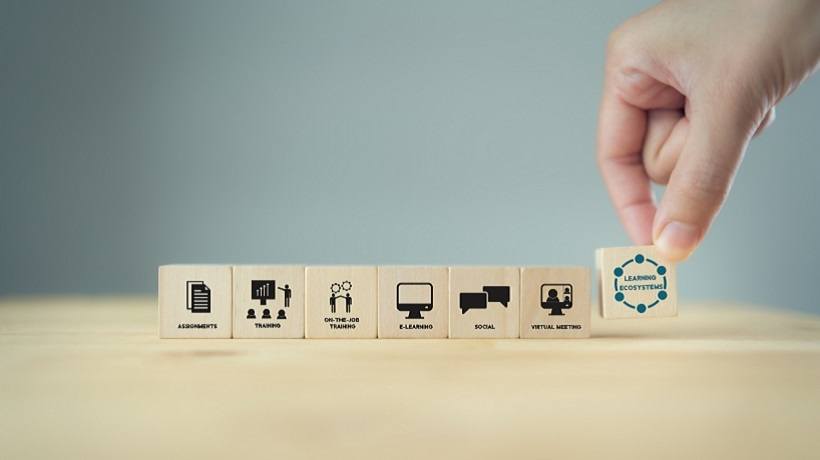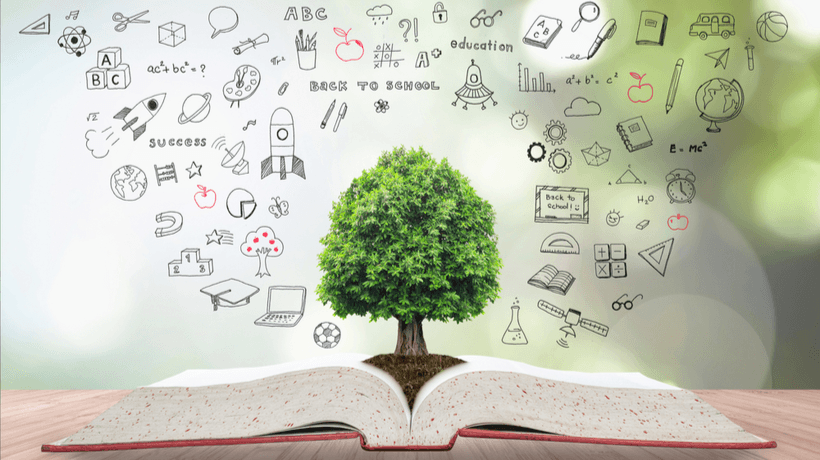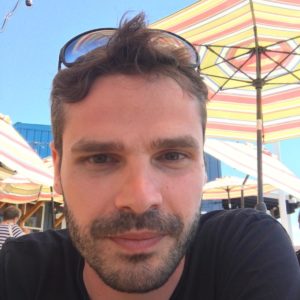How To Evolve To Stay Relevant
Disruption is a term that is often used in business and technology contexts. It refers to a process or event that causes a significant change in the way that something is done. Whether it is "positive" or "negative" really depends on your context. Think of disruption as a huge wave that suddenly appears in the ocean. Some are thrilled to ride it while others don't want the boat to be rocked at all. The Learning and Development (L&D) industry has been talking about disruption for years. Talking. A modern learning ecosystem (MLE) is about doing.
Why Do We Need A Modern Learning Ecosystem?
One thing is sure about disruption: change. The way we live, work, and get things done consistently change. That means we need to keep learning to stay relevant instead of being washed ashore by the disruption wave. Ignoring the wave is not a strategy. For example, today, I could ask Artificial Intelligence (AI) to help me out with writing this article about the modern learning ecosystem. With a simple prompt, Jasper would come up with something like this [1]:
There are many reasons why we need a modern learning ecosystem. Firstly, the current education system is no longer meeting the needs of today's learners. In addition, the rise of digital technologies has created new opportunities for learning, but these technologies are not being used to their full potential in the classroom. Finally, the current education system is not preparing learners for the jobs of the future.
Fine, Jasper, But How Should L&D Address These Issues?
To address these issues, we need a modern learning ecosystem that uses technology to its full potential and meets the needs of today's learners. A modern learning ecosystem would include:
- A personalized learning experience that adapts to the needs of each learner.
- A variety of learning methods that cater to different types of learners.
- A collaborative learning environment that encourages teamwork and cooperation.
- A rich multimedia experience that engages learners and keeps them interested.
And this is just the beginning of working alongside AI. Technology around us has been evolving at lightspeed. How much has L&D evolved? Not enough.
The Modern Learning Ecosystem
As a Sr. Learning Technologist, I've spent months of research and hundreds of iterations on a strategy paper laying down the foundations of a modern learning ecosystem. So, I'm thrilled that JD Dillon has published his book on the exact same topic [2]. I've been following JD's work for years now, and I know whatever he writes will be meaningful, thought-provoking, practical, and hands-on. This article is a review of the book, along with my commentary from the learning trenches.
Let's start with the subtitle: "A New L&D Mindset for the Ever-Changing Workplace." L&D has been talking about disruption for two decades. Talking. We know the workplace has been changing. We know there are disruptive forces in place. It's like we've seen this wave coming closer and closer, but we mostly just talk about it. We need a new mindset.
Unfortunately, shiny new technologies that we repurpose from other areas of life do not solve our L&D problems. It doesn't matter what ecosystem you have in place if your thinking does not evolve. The fundamentals of how people learn haven't changed a lot. The word "modern" is not about how we use our brains to learn new skills. It is about evolving our thinking, our value proposition, our processes, and our tools to meet the needs of change. L&D doesn't need a modern learning ecosystem. The workforce needs it.
How Do You Think Differently About Learning?
JD explores three workplace learning models that inspired his work in the field: the 70-20-10 model, the continuous learning model, and the five moments of need. All three have one thing in common: reality. Practicality. Simplification. That's actually three. If you're not familiar with the models, JD has a quick recap in the book. I suggest reading up on the criticism of the models as well so that you can have an informed opinion. For me, Cathy Moore's action mapping and the five moments of need are a must.
And then there is Chapter 2. In my mind, Chapter 2 of the book is the most important part. It is about mindset change. Again, no technology, framework, or metaverse will help us do our job better unless we evolve in our thinking of the purpose of L&D and the value it contributes. When I encourage people to think differently about learning and experimenting, they often ask the same question, "what if we try something and we're wrong?" My answer is always the same: "It is okay not to be right. It is okay not to be perfect. It is not okay not to evolve from there."
That's why Chapter 2 in JD's book is where I encourage you to spend ample time. From the coyote conundrum to the reskilling paradox, you'll find lots of food for thought. Before implementing a strategy, you must have your fundamentals right: "What is the purpose (and value) of L&D?"
JD uses the word "adopt" for a new mindset. And while this may be semantics, if you run into resistance (because disruption and change often level the playing field and people get really defensive about it), you may want to try "evolve" instead. Evolve builds on the current, and it may feel less threatening to those who need to change.
Building The Modern Learning Ecosystem
In the rest of the book, JD explains the modern learning ecosystem in detail, starting this with six things L&D does. I saw JD presenting the fundamental non-fanciful six-bar image of the modern learning ecosystem years ago. I remember one webinar where JD was explaining how this simple "stack" approach has been working for him to evolve their learning function. Many L&D professionals in the chat were focusing on the "course content" part. The smallest part. And that brings us back to Chapter 2.
If your job is to convert content from one form to another as fast as you can while applying learning theories and engagement tactics, you don't need an ecosystem. However, with how AI is evolving today, you might need a new job tomorrow. Not to scare people in the industry, but if we don't get Chapter 2 right, we may not have a Chapter 3 in the near future. If you tell business stakeholders that your team can build a single course in four weeks that is going to be 90% effective (if measured at all), and this is compared against what AI can build for role/skills/segment-based in an hour, let's say only 70–80% effective for now...Guess what the business will go with?
What Are The Pillars Of The MLE In JD's Framework?
The non-fanciful stacked bar image includes six elements:
- Push Training
- Pull Training
- Coaching
- Reinforcement
- Performance support
- Shared knowledge
What's in common in the bottom four? There's no course content there. There's no lecturing or reading PowerPoints. There's no generic skills training like, hey, everyone needs to learn empathy and communication skills. The four bottom ones are about individuals doing their job. Doing. All of this brings us back to the evolving mindset again. Once we give up the illusion that what "we cover" in training is learned, applied, and makes a difference, we will be free to think differently about what to do.
But what about SMEs and stakeholders who trust us with our expertise to create training? I hate to break the news to you, but the first skill we need to learn to evolve is the ability to shift from content creator mode to "enabler and accelerator." We don't own learning. We own the responsibility to create the most effective conditions for learning, and it can be as simple as creating a checklist. "But that's not learning!!!" Exactly. Why. Chapter 2. Is. Important.
What is our goal? To be right about how people learn? Is our job memorization only? Or to make a difference in people's work and lives? I believe it is the latter. And to make that happen, we need allies. We can't do it alone. The workplace is a messy, illogical, often unpredictable place with broken processes, hastily written instructions, imperfect UX, competing priorities, etc. These are the conditions under which we need to help people grow.
That's why I appreciate JD's approach to the modern learning ecosystem (with examples at the end of the book). It is not a theoretical world where learning is an abstract process. It is a simple and practical approach that you can adopt as is, adjust to your culture and limitations, or just completely ignore.
Ignore? Then why read it in the first place? Because it is okay to ignore something you know. Once you understand something new, your thinking has evolved. Based on the data and your situation, you may ignore it if there is no value in it for you. Your thinking has already evolved based on the new insights. What is not okay is to choose to ignore without understanding what the value could be for you. In other words, the data-informed decision not to change anything is okay. A gut-informed decision of the same is not.
Chapter 12: The Data Side Of The Story
And then I got to Chapter 12. And I changed my mind. My thinking evolved. I no longer claim that Chapter 2 is the most important part. Chapter 12 and Chapter 2 are the most important, together. If anything, this chapter would need to be bigger. We need a bigger boat for that wave.
Measurement = Boring
Measurement is something I used to not care about. Early in my career, I was thrilled to learn new technology (Macromedia Authorware, Flash, XML, programming languages, etc.) and apply it to learning design. I was drawn to the creative part of the job. I designed and built games and gamification solutions; I set up a whole server because IT didn't know what to do with our gamified vision. Two things changed my mind:
- Working closely with operations and the business and seeing how little difference my effort made in the grand scheme of things. Learning the business perspective of things, I started appreciating how vanity metrics are actually hurting our industry.
- Firsthand experience of the impact of our work on the audience. Just like JD, I worked with call center agents, and it made me realize how we were living in a parallel world.
In one world, there were stakeholders, managers, and SMEs all "knowing" exactly what's needed. In another, I was seeing the result of that work (or the lack of it). In one world, we got great Level 1 evaluations, a high completion rate, and glowing stats around the number of hours delivered. In the other world, supervisors were coming up with their own cheat sheets for agents, because very little of my creativity translated into application on the job.
"What gets measured, gets done." You probably know that phrase. I learned to appreciate an evolved version of the saying: "What gets measured, gets designed for." In other words, if you are measuring for the wrong things, you're going to make design and development decisions that work for that measurement criteria. And by doing so, you gain stats but may lose credibility with your target audience. We need to stop wasting people's time. Period.
Chapter 12 gets into the data and measurement part of our job. My biggest two cents is that you start with that. Read Chapter 2 and Chapter 12. Data and measurement are not the shiny, sexy parts of the job. But if you don't get it right, your modern learning ecosystem may become just another LMS.
Digital Transformation
I worked with several big organizations on their digital transformation efforts before the pandemic. Then the disruption happened—in fact, one of the biggest and most abrupt disruptions in how we work in decades. Virtually every organization was impacted by the wave. And an organization is as good as its people. Digital transformation is not a project. It's not about being right. It's about making a difference. For that, people need to change. People need to evolve their own thinking; they need to learn new skills. Fast. As JD says: "An organization can only transform as fast as its people can learn."
And yes, there's a typo in the book, in the edition I'm reading: "it's" instead of "its". But it's a good example to reinforce my point: it's okay not to be perfect. What's not okay is not evolving from there.
Conclusion
L&D has the talent and skills to stay relevant in the game of transformation, but only if we evolve the way we think about our purpose and our role, and we hold ourselves accountable for not only what happens in the LMS but more importantly, what happens on the job. For that, we need to give up the illusion that we own learning in the workplace. We need a new framework to apply: something simple and practical. Something that centers around making a difference on the job rather than being right in theory. That's why I recommend reading JD Dillon's book, The Modern Learning Ecosystem.
References:
[1] Jasper AI
[2] Dillon, JD. 2022. The Modern Learning Ecosystem: A New L&D Mindset for the Ever-Changing Workplace. Alexandria, VA.: ATD Press.









